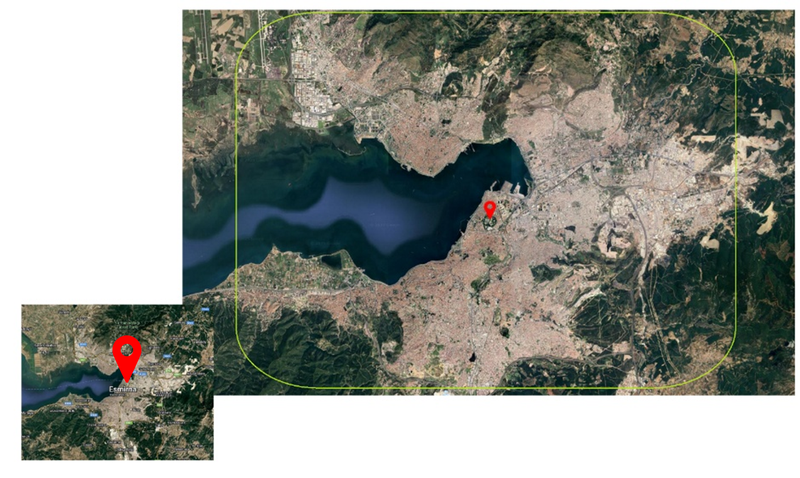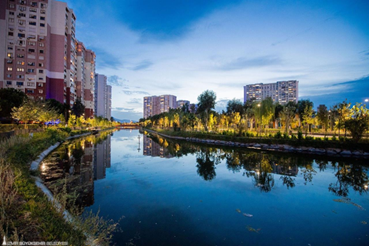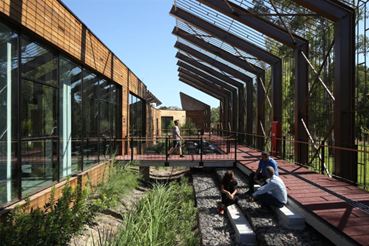All official European Union website addresses are in the europa.eu domain.
See all EU institutions and bodiesMultiple Nature-based Solutions such as green corridors, urban forests, and innovative water management systems improve climate resilience and enhance urban biodiversity.
Key Learnings
About the Region

Climate Threats
Ìzmir has been experiencing a steady rise in average temperatures over the past 50 years, with recent summers recording some of the highest temperatures in the city's history. The key climate threats include droughts and extreme temperatures causing water scarcity and flooding due to heavy rain events stressing the city’s drainage system. More frequent and intense heatwaves have increased the temperature within the city compared to its surroundings, significantly impacting public health and increasing energy consumption for cooling. Prolonged droughts and population growth also lead to water shortages due to increased demand for freshwater. Changes in precipitation patterns and temperature extremes (hot to cold and vice versa) threaten biodiversity, reducing ecosystem resilience in urban and suburban areas. These threats have required prioritising climate adaptation and resilience-building in Izmir’s urban planning strategy.
Integrating climate risks into urban development
Success Factors of Nature-based Solutions Implementation
Several factors have contributed to the successful implementation of Nature-based Solutions and effective application of the climate change adaptation strategy within the URBAN GreenUP project in Ìzmir:
- Strong collaboration among local authorities, academic institutions, and 25 European and non-European partners (8 municipalities, 18 technical and educational institutions, 5 industry organisations, 2 non-profit organisations and 1 public body), fostering knowledge exchange and sharing best practices.
- Efficient use of green infrastructure, such as planting native, location-adapted species and water reuse, providing urban cooling, improved air quality, and increased biodiversity.
- Innovative smart water management solutions provided by Nature-based Solutions, including rainwater harvesting and smart irrigation systems, ensuring water conservation and flood control.
- Community participation and public support, engaging citizens in co-design and co-creation activities, ensures long-term sustainability and social acceptance of Nature-based Solutions.
- Policy integration and adaptive governance within urban planning, allow flexible policy adjustments based on real-time data and stakeholder feedback, provided by stakeholder dialogues. Those measures also helped address initial stakeholder resistance and concerns regarding limitations at different scales, land uses and properties.
By integrating Nature-based Solutions into urban planning, Ìzmir is not only mitigating climate risks but also creating a more liveable and sustainable environment for its citizens.
Raúl Sánchez – URBAN GreenUP Project Coordinator
These factors demonstrate the importance of interdisciplinary cooperation and local engagement in addressing urban climate challenges.
Citizen involvement at every project stage is crucial for implementing urban climate change adaptation measures and for project success. Activities include public consultations to engage the broad public, educational workshops for collaboratively designing tailor-made solutions and awareness-raising about the importance of Nature-based Solutions. Informing citizens in the first place, and considering their concerns ensures community involvement and acceptance, helping overcome implementation barriers and increase overall acceptance of the adaptation efforts. This also ensures long-term sustainability.
Smart water management solutions such as sustainable water diversions (Figures 2 and 3) and planted swales (Figure 4) enable thoughtful irrigation during water scarcity and stormwater retention to reduce the risk of flooding during storms.



Green corridors formed by urban forests, urban parklets, and vertical gardens such as fruit walls and green pavements, planted with climate-adapted species (Figures 4-6) provide shading, enhance biodiversity and contribute to citizen well-being by improving open space quality, making Ìzmir a more liveable city. Green roofs and urban forests effectively reduce urban heat, improve air quality and enhance biodiversity.



Summary
Further Information
Contact
Keywords
Climate Impacts
Adaptation Sectors
Key Community Systems
Countries
Funding Programme
Disclaimer
The contents and links to third-party items on this Mission webpage are developed by the MIP4Adapt team led by Ricardo, under contract CINEA/2022/OP/0013/SI2.884597 funded by the European Union and do not necessarily reflect those of the European Union, CINEA, or those of the European Environment Agency (EEA) as host of the Climate-ADAPT Platform. Neither the European Union nor CINEA nor the EEA accepts responsibility or liability arising out of or in connection with the information on these pages.
Language preference detected
Do you want to see the page translated into ?


